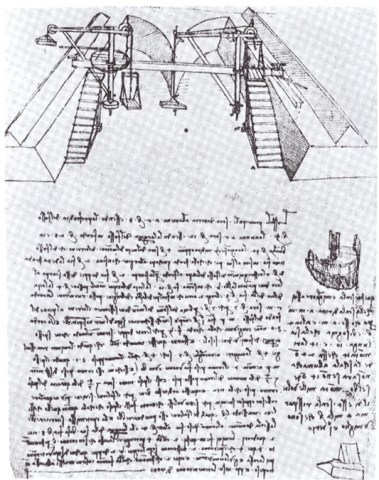When Leonardo arrived in Milan in 1482, Ludovico II Moro ordered him to study a system who made it possible the navigation from Lake of Como to Milan compensating for the lack of any large river. Thus Leonardo planned a system of dams to solve the problems of the different levels, making the territory navigable and the boats an important means of transport and communication for the town of Milan.
During his first stay in Milan, Leonardo draws a fascinating map of the city. Among all the improvements that Leonardo brought are to remember all the innovations connected to the system of locks, which are fundamental for enabling the communication between reservoirs of different levels.
Milan’s closely-knit network of canals and locks provided energy for its many hydraulic wheels, which contributed to making its production system of the fifteenth century one of the most highly developed in Europe.

Leonardo drew and projected several machine tools that made use of water energy. He utilized his knowledge of mechanics to produce increasingly complex movements in the process of automation.
He was also involved in dredges and bridges. He designed a dredger to 'dig the earth' from the bottom of the basins and channels.
The dredge was made up of four blades, which, driven by a crank, collected mud and debris, and then deposited them in a raft moored in the middle of the dredge. Leonardo concentrated also on the construction of bridges because he was convinced that they were extremely important to allow navigation or connect and isolate buildings, villages and cities.